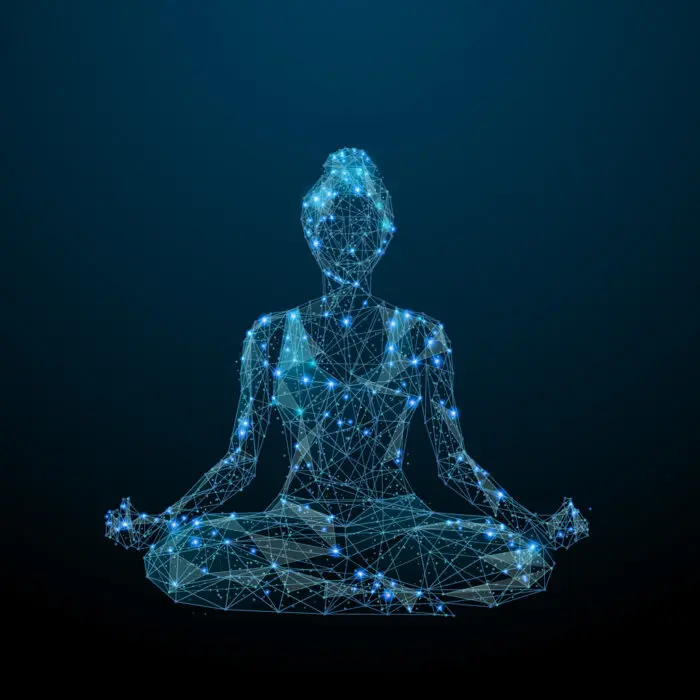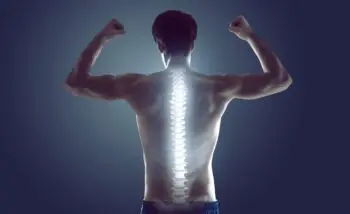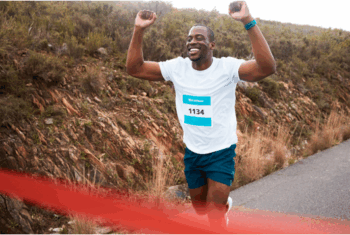Spine health is important for day-to-day activities, but also allows for more strenuous activities such as weightlifting and sports. This article explores the experiences of a weightlifter, a collegiate track runner, and a high school varsity tennis player. Each perspective emphasizes the significance of spinal motion with respect to their athletic endeavors, but also to their daily lives outside of sports.
The Weightlifter
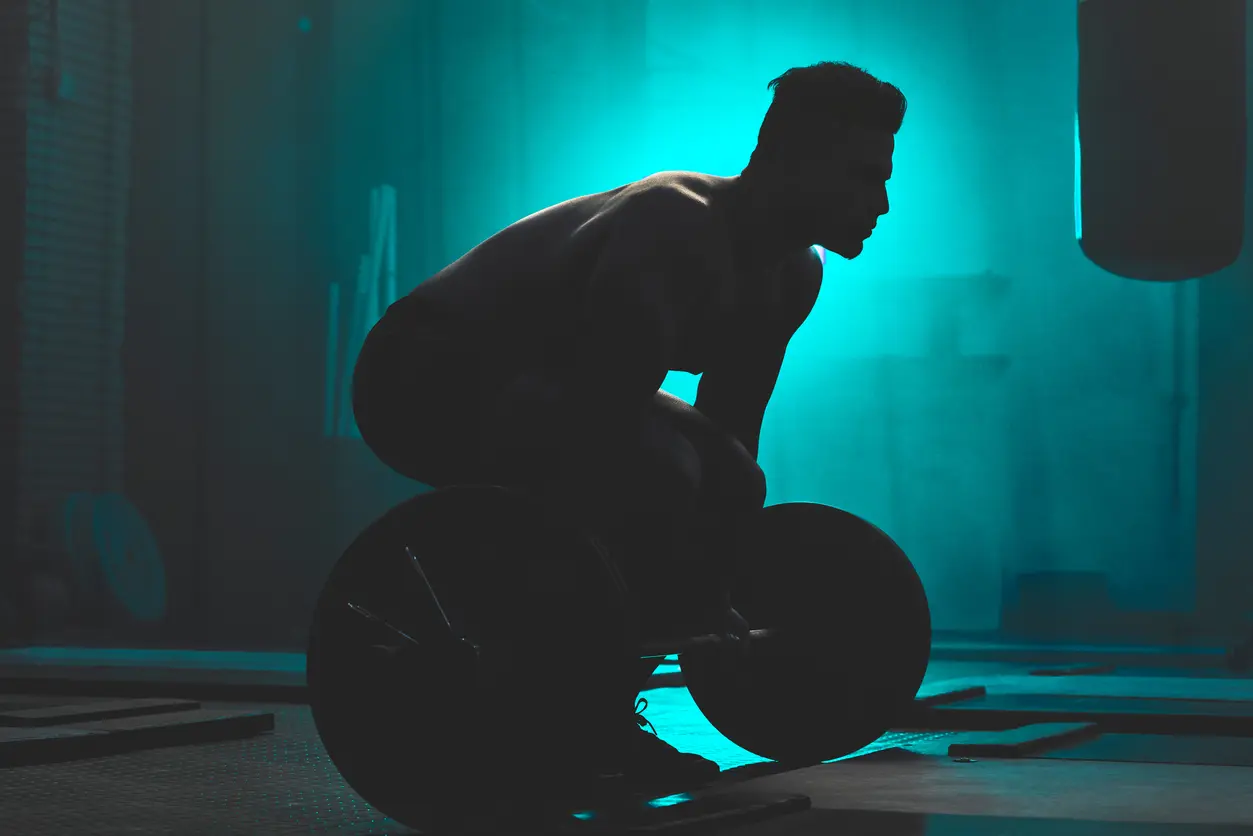
As a weightlifter and current postgraduate researcher in the midst of applying to medical school, I have grown to understand the significance of spine health. Through my time in the weight room and working towards medical school, the connection between motion preservation and spine health has become quite evident. Even at a young age, this connection must not be overlooked.
My passion for weightlifting stems from my time as a football player when I was younger and has grown to be a large part of my life. Weightlifting serves as both an avenue for stress relief and contributes to my overall health and well-being. The spine is central to all core components of weightlifting. I have found that to be an efficient weightlifter and see results, spine health has to be prioritized, especially spine mobility. By understanding the importance of protecting spinal motion, I follow a pre-workout routine to help preserve motion and reinforce my health and fitness goals:
Stretching before every workout
I stretch before my workouts to help increase my flexibility and range of motion. By doing so, I am able to carry out each rep and set in my workout with proper form, which is important for both progress in the gym and avoiding injury.
Rolling out and dead-hangs
In addition to stretching, I also roll out my back using a foam roller, which helps greatly with myofascial release and relieving any tight points along my back before my workout begins. I also like to do a few seconds of dead hangs (hanging on a pull up bar) as I have found that it helps relieve pressure in my back, improve my posture, and engage my core.
Core engagement
The advantages of having a strong core and engaging it correctly while lifting heavy weights cannot be overstated. I recall an injury I sustained a few years ago lifting because I was squatting heavy without engaging my core enough, causing low back pain for the next few months. Having a strong core provides stability for the spine during dynamic movements, which is most of weightlifting, and helps minimize the risk of injury while lifting. It also supports the spine by distributing the load force, taking some pressure off the spine.
Together, these three motion-preserving practices have helped improve my results in the weight room and contribute to good practices in spinal health.
When I am not in the gym, I spend quite a bit of time working towards medical school and in my
current work as a researcher. I am well acquainted with prolonged periods of sitting at a desk. Like so many with a desk job, I sometimes find myself slouching, especially when studying. Poor posture goes against the natural alignment of the spine. Prolonged poor posture can put us at risk for spinal degeneration later in life, injury, and loss of spinal motion. I catch myself hunched over in my chair or looking down in a stooped position as I study or work at my laptop.
Having proper posture helps maintain our body’s natural alignment and can reduce stress on the spine, ultimately reducing the risk of injury. It is important to minimize stress on the spine and limit any hindrance on spine mobility. I have learned that my present actions will affect my spinal future. In an effort to improve my sedentary situation, I like to utilize a pillow, take incremental walking/stretching breaks, and keep my feet grounded. These small adjustments have helped me improve my posture and practice better spine health.
The Runner
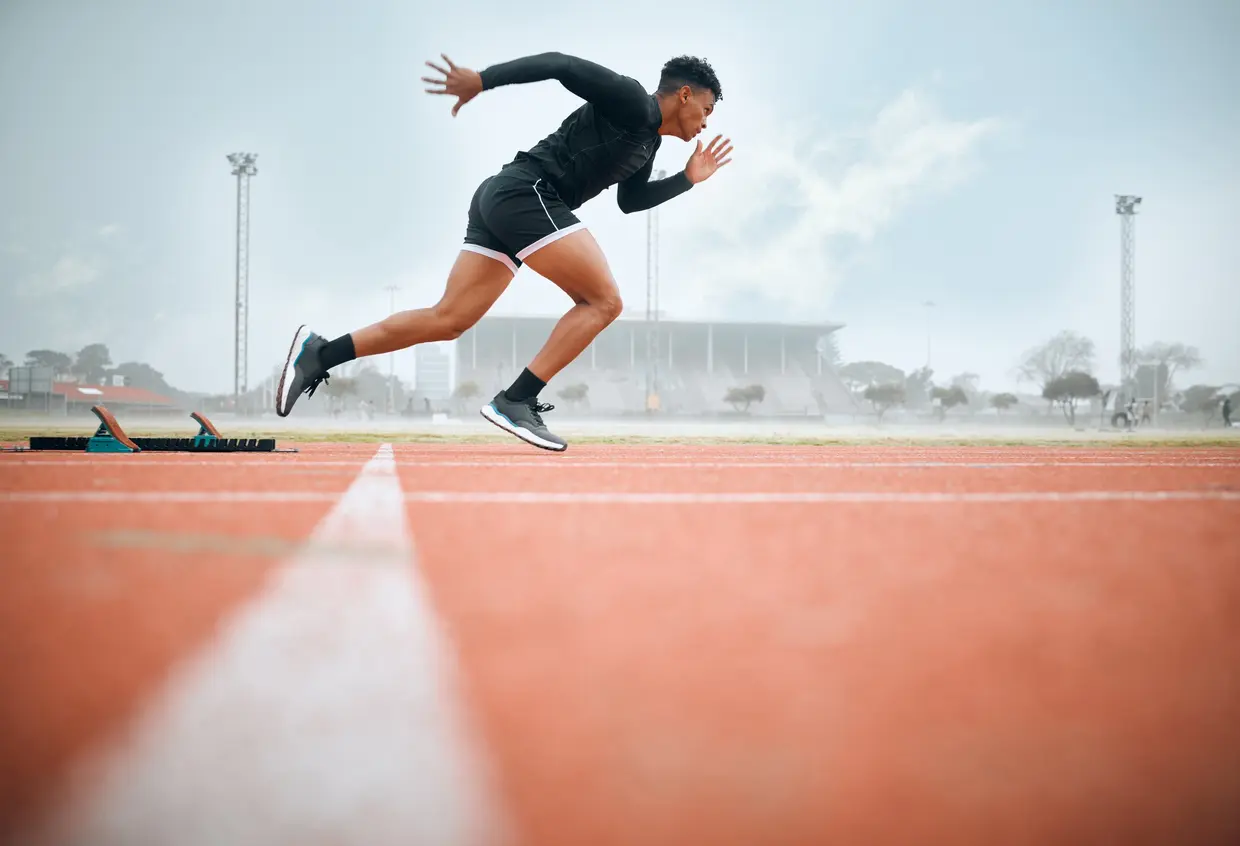
As a collegiate track runner, I’ve spent countless hours honing my craft, pushing my body to its limits, and attempting to master the art of motion. From grueling reps of 300 meters uphill to full body Olympic lifts, motion has been important to every inch of progression in my life. Understanding the anatomy and mechanics of track running has been crucial in my development on the track and in the classroom.
Track and field is a complex interplay of various anatomical structures working in harmony. The primary muscles involved in running are the quadriceps, hamstrings, gluteus maximus, calf muscles, and the core muscles. The quadriceps, located at the front of the thigh, are responsible for extending the knee and propelling the body forward. The hamstrings, at the back of the thigh, play a significant role in knee flexion and hip extension. The gluteus maximus, the largest muscle in the body, is vital for hip extension and stabilizing the pelvis. The calf muscles, specifically the gastrocnemius and soleus, are essential for allowing the foot to push off the ground. Lastly, the core muscles provide stability and balance, ensuring efficient and safe movement.
The core is often thought of as being just the abdominal muscles, “the abs,” in only the front of the midsection. But think of the core of an apple. No matter what direction you rotate the apple, the core remains at the center achieving inner stability from all angles. The core of the human body is similar, and includes the abdominal muscles in the front (rectus abdominis is more superficial and transverse abdominis is deep), the strong muscles of the back (called multifidus), and the oblique muscles on the sides. The diaphragm above and pelvic floor below are also often considered part of the core. Among numerous other activities, the core supports and protects spinal motion.

As a student-athlete, balancing rigorous training sessions with demanding academic coursework has taught me invaluable lessons of remaining mobile throughout the course of my day and working on flexibility. As someone with long legs, my leg muscles are often tight following an arduous workout. Tight leg muscles can decisively affect the spine by altering posture and everyday movement. Tight hamstrings can pull the pelvis into a posterior tilt, increasing stress on the lower back. In contrast, tight quadriceps can cause an anterior pelvic tilt, straining the lumbar spine and contributing to lower back pain.
Imbalances can lead to discomfort, reduced range of motion, and increased risk of injury due to the altered mechanics and added stress on the spine. Remaining in motion as the day progresses, counters stiff joints and tight muscles. I stay in motion by doing yoga after every training session and in the morning, walking to class, and locating standing desks on campus for studying. Yoga encourages blood flow to the muscle fibers, which can add to the benefit of a workout. Stretching can lower and even prevent the risk of injury.
By embracing these practices, I’m enhancing my athletic and academic performance, safeguarding my spinal health, and preparing for the challenges ahead as I pursue a career as an orthopedic spine surgeon. Surgery demands precision, endurance, and physical resilience, so ensuring that I am fit to meet these demands is one of the many imperative steps to having success in this field. The insights gained from my athletic endeavors, particularly in understanding the intricate relationship between leg muscles and spinal alignment, will be invaluable as I work diligently. Additionally, the ability to empathize with patients experiencing spinal issues due to muscular imbalances allows for greater interpersonal connections. By integrating preventive practices into my daily routine now, I am protecting spinal motion and laying the foundation for a long and sustainable career.
The Tennis Player
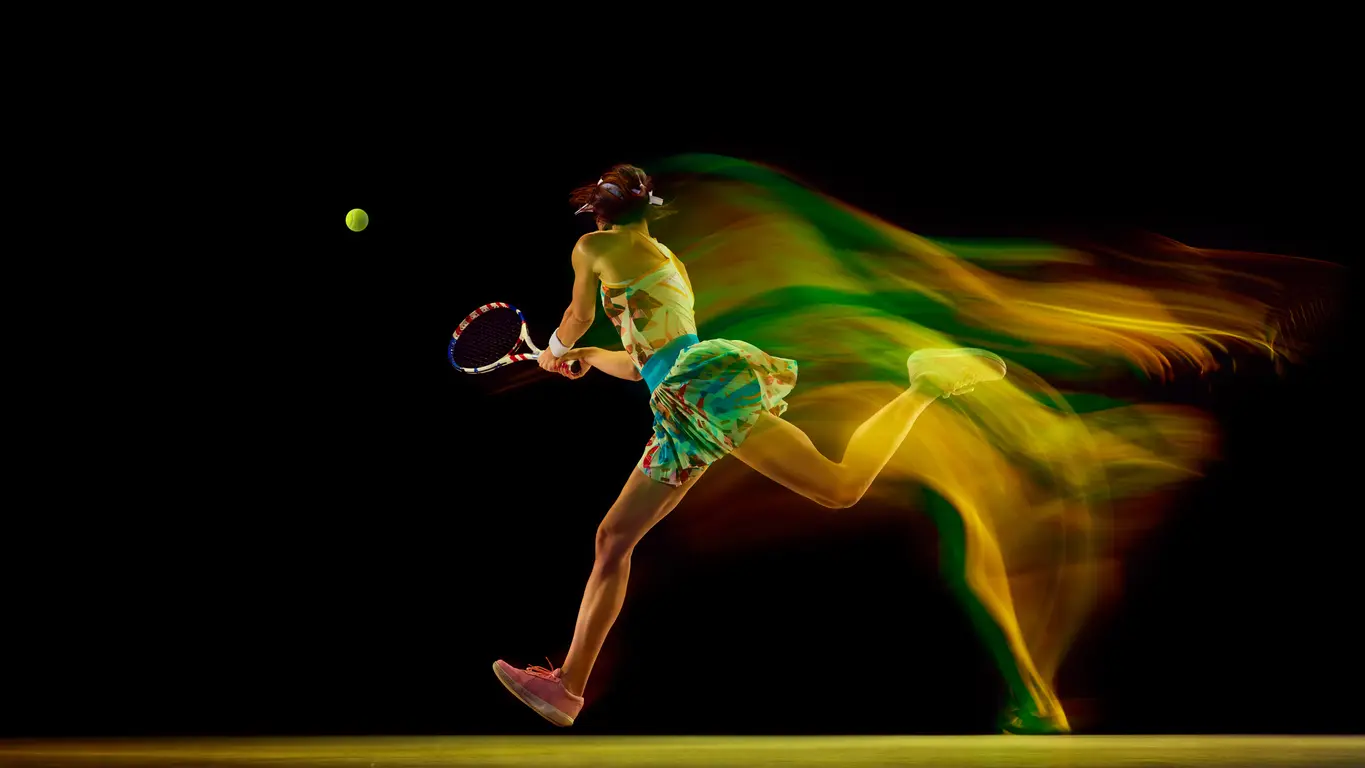
Imagine this: you go in for the big shot, feeling the rush of joy as your racket makes perfect contact with the ball. Suddenly, a sharp pain surges through your back. Your body can’t sustain the demands of the hit, and the recoil leaves you struggling to move. It’s a stark reminder of the toll that hours of sitting in class have taken on your spine.
As a high school student, I am stuck in the classroom for hours and am often hunched over desks and only have a few minutes to walk and stretch my legs between classes. This loss of activity takes a physical and mental toll on our bodies. This problem is real and draining. Speaking from my own experience this isn’t something to ignore, whether you are a student athlete or not.
I’m on my high school’s varsity tennis team, which is a sport that requires constant motion. During practice, we replicate the movements required to excel during a match, including running, lunging, and twisting in every direction. Whether sprinting to the net for a volley or twisting for a perfect backhand, every part of my body is moving. The sport is multi-directional and multi-planar, requiring quick transitions between forward and backward, side-to-side, and rotational movements. In a typical match, my body rotates to hit ground shots, moves laterally and lunges to chase down shots, and sprints forward to volley. These diverse movements and shots activate different muscle groups, keeping my spine flexible and robust.
The serve in tennis is a perfect instance of the physical demands of the sport. It’s not just about hitting the ball; it’s about the whole body working together. The spine hyperextends in the backswing and rotates through the follow-up. The greatest stress manifests after the ball is hit due to the extreme forces generated by the powerful serve. To protect myself from injuries, I need to be conscious of using my core muscles. Core strength is an essential part of keeping my spine healthy and in motion. On the tennis court, my body is engaged, and my spine is in constant motion. Off the court, I’m stuck in prolonged periods of no activity, which is less than ideal. The contrast couldn’t be more stark.
During school, I spend most of my day hunched over sitting at a table or desk. We generally have 90-minute class periods with 5-7 minutes in between to get to the next class. There’s barely any time to walk around and the only actual breaks are for lunch or a short bathroom trip. The result? I experience strain in my neck and my posture suffers. This setting also places loads of pressure on the lower back. Prolonged sitting, in particular with bad posture, can result in significant back problems. Unfortunately, schools are not designed with spinal health and motion in mind, and students are suffering as a result.
Take Home Message
Whether you are weightlifting, running, playing tennis, studying, working, or participating in daily activities, having a healthy and fluid spine allows for optimal results in the various activities we may face. By emphasizing the significance of protecting spinal motion, we hope the need to incorporate daily spine health practices is apparent. At a young age, or any age, recognizing the importance of spinal health can enhance performance in sports and daily activities, ensuring a foundation for lifelong wellness. Spine health and motion are important throughout every facet of life.
